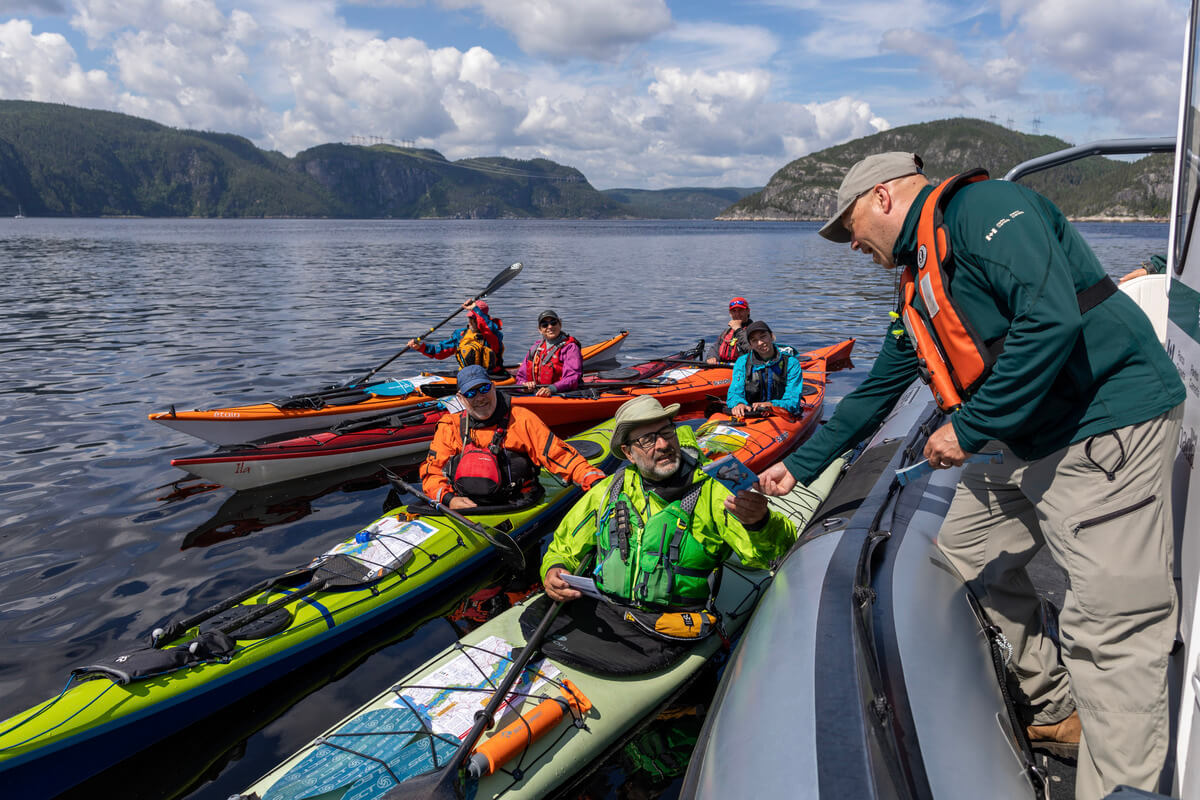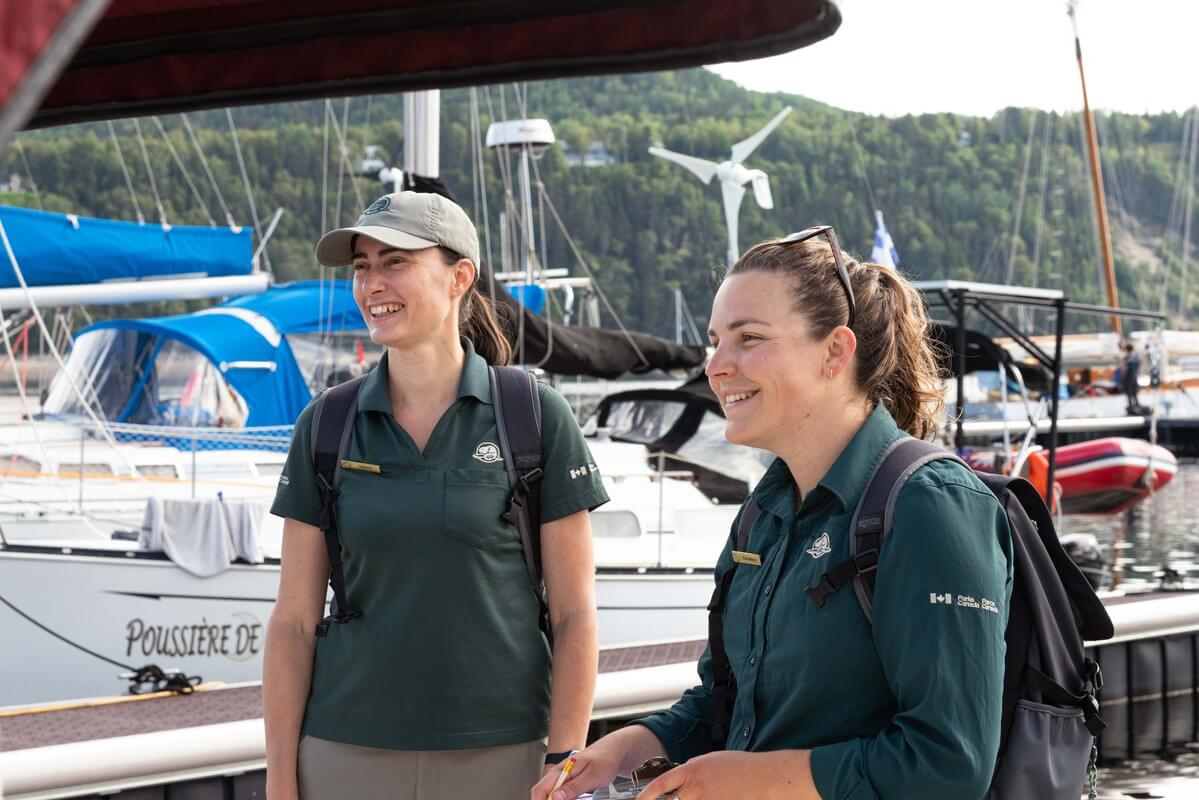Protecting the Saguenay-St. Lawrence Marine Park requires teamwork. Research makes it possible to better understand various issues related to the marine environment, while regulations are the basis for applying the conservation measures so essential to the survival of a number of species. The external relations team in which I work strives to make research and conservation efforts familiar to all those who visit the Marine Park, whether by land or by sea. Our aim is for boaters visiting the Marine Park to become “ambassadors” of the park and whale protection.
Once summer arrives, I get ready for our visits to the various villages around the Marine Park (boating events, presence at marinas and boat launches) and, of course, our trips out to sea. We even have our own names for these activities in our jargon.
What’s a typical day like? We either head toward a boat launch or marina, or set sail aboard the Uapameku, bringing with us pamphlets on regulations, stickers from the “Navigating Whale Habitat” training, interpretive material and a notebook. We meet with sailboat, motorboat and kayak enthusiasts, taking the time to get to know them and learn where they are from and their habits on the water. Some are regular visitors to the Marine Park, while others are here for the first time. As the discussion progresses, we take the opportunity to address various topics: Marine Activities Regulations, recommended conduct in the presence of belugas, areas that are off limits to watercraft, speed limits, etc. The most popular subject is without a doubt the conduct to adopt when belugas are nearby.
During our conversations, we also take note of the type of boat, the name of the boat, its origin, the day and time of the exchange, and the topics discussed. This way, we keep track of those boaters who have been informed so when other patrol teams ply the Marine Park waters, they know who has already been met with.
I love the diversity of people that we cross paths with. These discussions enrich our knowledge of what visitors to the Marine Park are looking for, which helps us fine-tune our communication strategies. Most visitors are also surprised to learn the temperature of the water, the strength of the currents or how quickly the weather can change. And amongst those we approach, there are some real globetrotters! This summer, for example, we docked at a houseboat from Florida. The occupants had lived on their boat for two years and travelled thousands of nautical miles.
These encounters allow us to work as a team with other people on the water in a joint effort to protect both whales and the Marine Park.
Ève-Marie Leblanc
Outreach Public Education Officer
Ève-Marie began her collaboration with Parks Canada in 2017 as a student. Enamoured with the North Shore region and the marine environment, she decides to settle permanently in Tadoussac. After several internships with various organizations in Quebec’s Haute-Côte-Nord region, she returns to the Parks Canada team at the Marine Park in 2022. She helps educate the public about the Marine Park’s actions, namely by visiting boat launches and plying the St. Lawrence Estuary and the Saguenay Fjord to inform boaters of the regulations currently in force.







